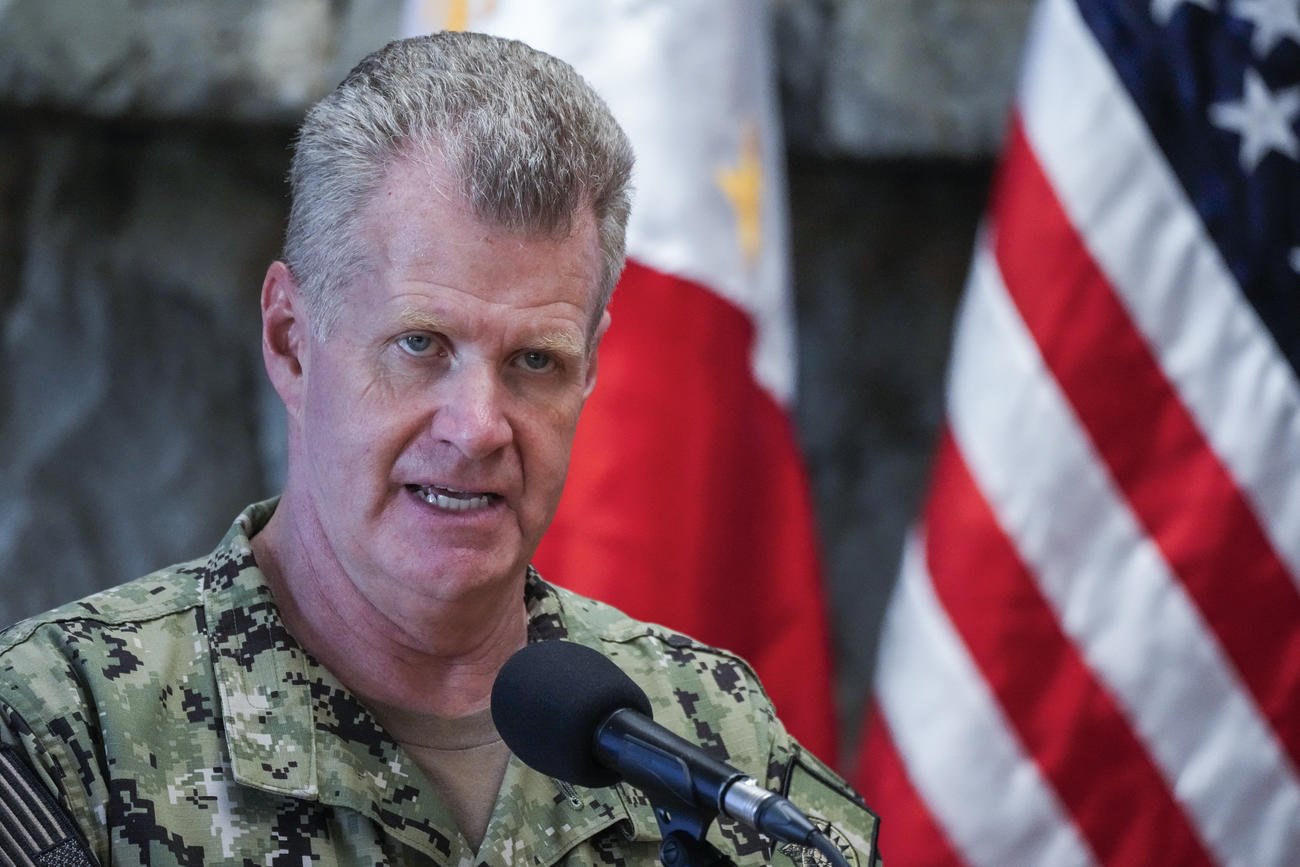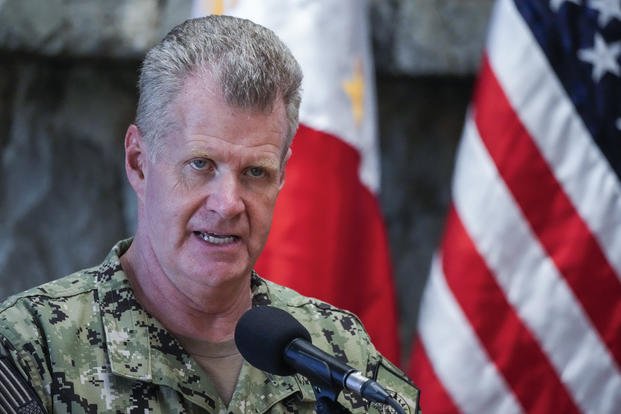

The top commander of U.S. forces in the Pacific wants to see a major revamp in how forces are armed and equipped amid simmering tensions in the region.
In a keynote address opening the Honolulu Defense Forum in Waikiki, Adm. Samuel Paparo bemoaned what many senior commanders see as a slow, burdensome federal bureaucracy that has made it harder for the military to field new weapons and technology.
Paparo told an audience of attendees from 19 countries at the ‘Alohilani Resort that there needs to be a concerted effort to remove “bureaucratic obstacles within our system that impede progress—every unnecessary review, every duplicative process—that damage our readiness.”
“(We need ) procurement at the speed of combat, not at the speed of committees, ” said Paparo. “Technology alone is not going to win this fight. We’ve also got to reform defense bureaucracy with unprecedented urgency.”
The conference brings together representatives from militaries and defense contractors around the globe to Hawaii, the nerve center of U.S. military operations in the Pacific. It takes place amid tensions with China, Russia and North Korea—which Paparo referred to as a “triangle of troublemakers ” that he said threaten stability in the Pacific.
Paparo advocated for expanding the use of artificial intelligence, 3D printing and other technology to allow the U.S. and its allies to gain an edge, telling the audience, “We need the capability to produce parts from propellers to circuit boards on demand. It isn’t future tech ; it’s current capability … the technology exists. I’ve seen it. It’s here in Hawaii and we have to scale it.”
The Department of Defense has been pouring money into Hawaii to build up its forces in the Pacific and to train a high-tech workforce in the island to support it. The Pentagon has considered the Pacific its top-priority theater of operations for some time, but ongoing wars in the Middle East and the Russian invasion of Ukraine have continually pulled attention from the Pacific.
In November, Paparo told an audience at the Brookings Institution in Washington that American munitions used to shoot down missiles and drones from Iranian-backed militants in the Middle East and that munitions sent to Ukraine to help Ukrainian forces fight back against invading Russian forces threatened stocks of available weapons to potentially fight China in a Pacific conflict, saying, “It’s now eating into stocks, and to say otherwise would be dishonest.”
The U.S. military has spent the past two decades fighting long, drawn-out counterterrorism campaigns while simultaneously conducting constant patrols across the world’s oceans. It’s come at steep financial and human costs, stretching the military and service members to their limits.
In Waikiki, Paparo told the audience that “our magazines run low, our maintenance backlogs grow longer each month for every critical joint force element—Army, Navy, Air Force, Marines, Space Force, Coast Guard—critical air, missile, maritime, space platforms age faster than we can replace them perfectly, and we operate on increasingly thin margins of error. Our opponents see these gaps, and they are moving aggressively to exploit them.”
China has been stepping up military maneuvers around Taiwan, a self-ruled island democracy that Beijing regards as a rogue province. Chinese Nationalist leader Chiang Kai-shek set up a government-in-exile on the island after losing the Chinese Civil War in 1949 and put the island under martial law, but since the 1980s it has democratized and become a key trading partner for the U.S.
Paparo said the Chinese military’s “aggressive maneuvers around Taiwan right now are not exercises, as they call them. They are rehearsals. They are rehearsals for the forced unification of Taiwan to the mainland.”
Though the U.S. has not officially diplomatically recognized Taiwan since normalizing relations with the People’s Republic of China in 1979, the Taiwan Relations Act passed the same year maintained de facto ties and requires the U.S. to provide Taiwan with weapons “of a defensive nature ” and “resist any resort to force or other forms of coercion that would jeopardize the security, or the social or economic system, of the people on Taiwan.”
Chinese military forces have increasingly flexed their military muscles in the Pacific. They consider the South China Sea to be their exclusive sovereign territory against the objections of neighboring countries and have built bases on disputed land formations in the busy waterway. Paparo accused Beijing of claiming “sovereign rights over international waters with breathtaking audacity and blatant disregard for international law.”
“They’ve harassed commercial vessels and intimidated regional nations, including treaty allies, attempting to exercise their legitimate rights, including poor fisher-folks, ” said Pa paro. “These actions also threaten the free flow of commerce through vital sea lanes that carry over one-third of global maritime trade.”
President Donald Trump’s new, controversial Defense Secretary Pete Hegseth has vowed to reform the Pentagon and revamp how the military works with defense contractors and look to loosen export controls on weapons—particularly to Pacific allies.
“We have to break down barriers to cooperation, align standards and create supply chains that can weather any crisis, ” said Paparo. “We always talk about strengthening our alliances and partnerships, and as joined at the hip as we are, we can never take them for granted and we can never make them strong enough. These are the foundations of our strength. These are our strategic centers of gravity. They’re not diplomatic niceties.”
However, while U.S. military leaders have championed alliances, Trump has in his first weeks of office taken a confrontational stance toward several American allies.
Trump has threatened high tariffs against America’s northern neighbor Canada and said he would make it the “51st state, ” drawing rebukes from Canadians across the political spectrum and prompting boycotts and a growing backlash. Trump has also said that he intended to take Greenland, a Danish territory, and make it into an American territory, and has not ruled out taking it by force. Attendees from both Canada and Denmark were present at the conference.
But even as dignitaries gathered for the conference in Waikiki, media in the Philippines reported that a joint patrol of Philippine, U.S. and Canadian ships and aircraft made their way through Philippine waters and reported encountering Chinese naval ships.
© 2025 The Honolulu Star-Advertiser. Visit www.staradvertiser.com. Distributed by Tribune Content Agency, LLC.
© Copyright 2025 Honolulu Star-Advertiser. All rights reserved. This material may not be published, broadcast, rewritten or redistributed.
